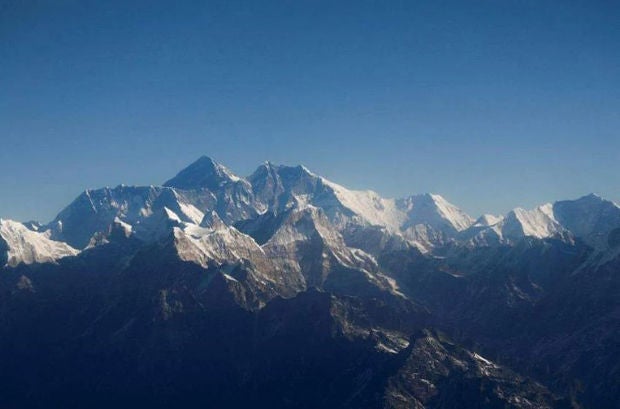
Hape and Hace are two forms of acute mountain sickness that can affect climbers, and both require immediate medical treatment. PHOTO: REUTERS
SINGAPORE - At a height of 4,000m on Dhaulagiri VII, a mountain in western Nepal, Mr David Lim noticed a rapid increase in his breathing rate.
He had developed a fever during his trek to the mountain’s 7,000m-high peak in 1996, and his team doctor diagnosed him the same night with high-altitude pulmonary edema (Hape).
Trapped on a ridge due to heavy snow and unable to descend, Mr Lim, recalling his experience then, said he took medication that slowed down his breathing.
His team descended the mountain the next morning.
Mr Lim was lucky because he could have died without treatment, as Hape is a fatal form of severe high-altitude illness that can cause fluid to accumulate in the lungs.
Another fatal illness is high-altitude cerebral edema (Hace).
It affected Singaporean climber Shrinivas Sainis Dattatraya on Mount Everest, and he has been missing since last Friday, after reaching the summit.
Mr Shrinivas last sent a text message to his wife that day, saying he had reached the summit but was not likely to make it back down.
He told her he had Hace.
Hape and Hace are two forms of acute mountain sickness (AMS) that can affect climbers from around 2,500m to 2,600m onwards, said doctors.
The best way to treat AMS is to descend quickly, they said.
Dr David Teng, a consultant from Tan Tock Seng Hospital’s emergency department, said Hace sufferers can experience severe headaches, confusion, hallucinations and loss of coordination, and even go into a coma.
He added: “Hace is a life-threatening condition and requires immediate descent to lower altitudes and medical treatment.”
With Hape, Dr Teng said, fluid accumulates in the lungs, and this can cause shortness of breath at rest, cough with pink or frothy sputum (secretions coughed up), chest tightness and rapid breathing.
He added that Hape, too, requires immediate descent and medical attention.
Dr Teng said AMS can develop as soon as a person reaches an altitude of 2,440m, and that oxygen insufficiency on the mountain can cause problems.
He added that rapid ascent, ascent to higher altitudes, strenuous physical exertion and previous cases of AMS can also increase climbers’ chances of developing AMS.
Dr Piotr Chlebicki, a senior consultant for infectious diseases at the Singapore General Hospital, agreed, recommending that after reaching about 2,500m in altitude, climbers should not climb more than 500m a day. And for every 1,000m ascended, climbers should rest for one day before resuming. Acclimatisation before climbing to the summit is also crucial.
He said: “Coming from sea level, even the fittest people would need around three weeks to get slowly adjusted to the altitude of Mount Everest.”
In 1998, Mr Lim led the first Singapore Mount Everest Expedition, but said he did not make it to the top as he had suffered a rib injury.

Singaporean climber David Lim developed high-altitude pulmonary edema while climbing Dhaulagiri VII in 1996, and developed the condition again in 2016 while climbing Chulu Far East. PHOTO: DAVID LIM
In 2016, he developed Hape again while climbing Chulu Far East, located in Nepal’s Annapurna region, and he recalled taking a higher dosage of medication as his usual dosage did not work.
He said: “It is very disconcerting to be lying totally relaxed and still have your breathing rate going at around 32 breaths a minute or so, and have the slight crackling sensation in your chest, which is a sign of the fluid accumulation from the edema.”
Dr Roger Tian, a senior consultant at the department of sport and exercise medicine at Changi General Hospital, said that at high altitudes, mountain climbers can also experience snow blindness and frostbite.
He said snow blindness can lead to permanent damage to the cornea and retina, while frostbite can cause gangrene and loss of exposed areas of the body such as fingers and toes.
He added: “For Hape and Hace, make an urgent descent of at least 500m to 1,000m. Specialised oxygen tents are usually available for evacuating these patients to a lower altitude.
“Medications can also be used at the same time, but urgent descent and oxygen are key.”
Contributed by














 Get it on Google Play
Get it on Google Play